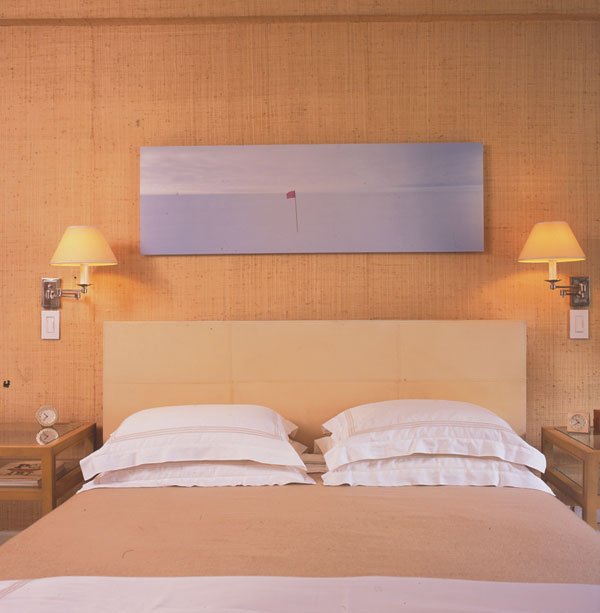Our ancestors made wonderfully creative use of candlelight to
warm up pre-electric households. But today we are blessed with a
full array of lighting possibilities, all helping to turn our homes
into havens, places of refuge and celebration.
Our ancestors made wonderfully creative use of candlelight to warm up pre-electric households. But today we are blessed with a full array of lighting possibilities, all helping to turn our homes into havens, places of refuge and celebration.
Lighting has the uncanny ability to change the mood of any room with the flick of a switch or possibly a remote. Most rooms have two types of lighting: task, or the concentrated lighting that allows you to see what you need to do; and ambient, the lighting used to set the mood.
I believe all rooms need both types of lighting. Lighting determines so many other things. It can, for example, highlight the colors in your room, the way texture is defined and even your comfort level. General illumination in a room can be addressed with recessed lights, track lighting, hanging fixtures or wall sconces.
Since task lighting is essential for reading or doing detailed work – anything from chopping vegetables to applying mascara – it can be achieved with directed, higher-intensity light; a downward reading lamp, under-cabinet light fixtures or a lighted make-up mirror can fill these purposes.
Ambient lighting is generally softer and can be in the form of recessed high-hats, sconces, strings of decorative lights, candles, tea lights and oil lamps. A dimmer switch is an essential element for any electrical light source with a wall switch, but is especially helpful when creating ambient light.
Here are some of my thoughts to “cozy up” the rooms in your home, while making sure you also have the requisite amount of light at hand to complete the task:
nKitchen: Kitchen lighting is generally task-oriented, but remember to
always include ambient for a pre-dinner glass of wine or dining in the kitchen. Rather than spacing ceiling high-hats or down-lights evenly over the kitchen ceiling, group them to focus more light on particular task areas.
For instance, two or more may be appropriate over the kitchen sink and stovetop. You may not need any over windows, or dining or island areas where hanging pendant lights or other fixtures may be installed. If the space above cabinets will be used for storage or display, you may want to install uplights on the tops of cupboards, small discs of light to provide a glow from the area of the soffit to the ceiling. Under-cabinet fixtures such as strip lighting will brighten counter space and also offer soft ambient light when used solo, when entertaining or when the kitchen is officially “off-duty.” Chandeliers over a kitchen table or counter seating can provide an unexpectedly elegant touch to kitchen lighting.
nBathroom: In the bathroom, glare can be annoying, especially when performing delicate grooming tasks. Recessed lighting for baths should be adjustable with an attachment that goes over the fixture; an eyeball or a wall-wash trim are both covers that partially obscure the fixture and direct the light source to bounce light off the walls and ceiling to help reduce glare and shadow.
Install wall-mounted sconces or over-vanity lights beside the mirror. Be sure to position sconces to shed equal light on both sides of the face, and 3 to 4 feet apart on the wall. Bathroom fixtures should have translucent shades to diffuse light, and exposed bulbs should be frosted to cut glare. Light the shower’s interior with waterproof fixtures for uniform brightness and be sure you’ve installed dimmers in the bathroom – a relaxing soak in the tub demands it. A chandelier with dimmer switch is another elegant solution for over the tub.
nBedroom: You’ll want to have high-hats with dimmers here. But be sure to include a floor or table lamp and bedside lights for reading. Swing-arm lamps attached to the wall on either side of the bed are terrific; they don’t take up valuable space on night tables and are easy to reach when it’s time for lights-out. They also are useful when a clean, spare, more serene look is required.
nLiving room: Historically, overhead lighting was not a popular option for the living room because it was used primarily for more formal / entertaining occasions that demanded either task (reading by the fire, mixing a cocktail) or ambient light (candles, chandelier or wall sconces). High-hats or recessed down-lights installed in a ceiling were considered too casual for this once-very-formal space.
However, when we moved into our house, the first thing I did was to have an electrician install recessed lights in our very dark living room. Sconces on a wall flanking
a fireplace or built-in bookcases are a good choice for living rooms, as are floor
and table lamps, which also provide a decorative accessory. Tall ceilings are enhanced with chandeliers and hanging pendants, but in keeping with today’s more casual living, these chandeliers and pendants tend to be less formal.
Research your lighting options before renovating or redecorating. If your budget precludes you from hiring a lighting designer, seek the advice of your contractor, decorator or a lighting specialist employed at a showroom or lighting store.













